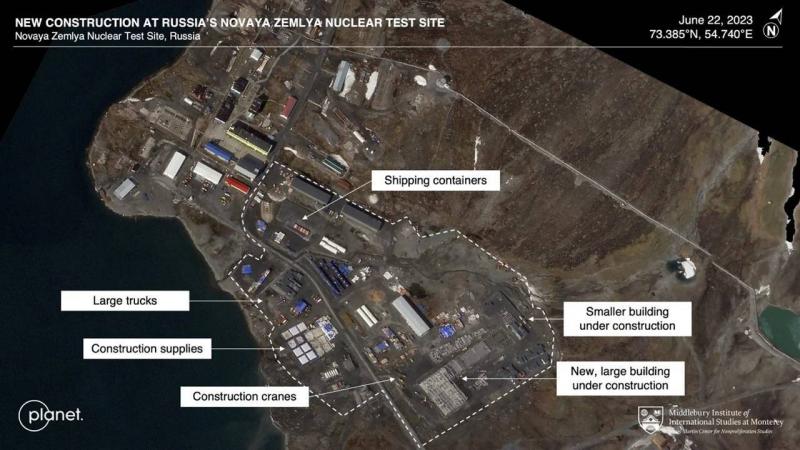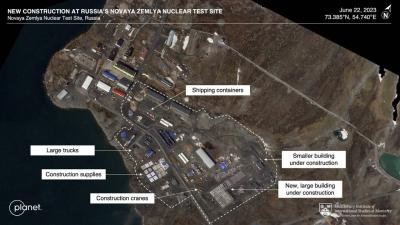Satellite images obtained exclusively by CNN reveal that Russia, the United States, and China have expanded their nuclear testing sites in recent years, coinciding with heightened tensions among the three major nuclear powers, the highest in decades. It is no secret that there are increasing geopolitical tensions between the U.S., Russia, and China, with the three armies conducting exercises to demonstrate their strength to one another in direct competition. This could ultimately lead to something that has not been widely contemplated since the end of the Cold War: the nuclear arsenals of these three nations.
The evidence was disclosed through commercial satellite images exclusively obtained by CNN. The images show new tunnels, roads, and storage facilities established over the past five years at locations including Novaya Zemlya, a Russian archipelago in the Arctic Ocean; Lop Nur, a dry salt lake in China's Xinjiang region; and the national security site in Nevada, in the desert northwest of Las Vegas.
Nuclear non-proliferation expert Jeffrey Lewis compiled and analyzed these images, noting that "one important factor for the U.S., Russia, and China is the desire to ensure that the nuclear weapons designed and tested in the 1980s and 1990s remain effective." Cedric Leighton, a retired U.S. Air Force colonel and CNN contributor, remarked that "the three countries have invested a significant amount of time, effort, and money - not only in modernizing their nuclear arsenals - but also in preparing for the types of activities that may be required for testing."
While there is no evidence of imminent testing, the Novaya Zemlya site in Russia has seen a surge in new construction over the past two years. On the first anniversary of his invasion of Ukraine, Russian President Vladimir Putin announced Russia's readiness to conduct nuclear tests, stating, "Some figures in Washington, we know this for a fact, are already thinking about the possibility of actually testing their nuclear weapons. If the United States conducts tests, we will do so as well."
Additionally, satellite images reveal surface expansion of the U1A complex, an underground facility at the Nevada test site. A spokesperson for the U.S. National Nuclear Security Administration confirmed to CNN that it is "re-utilizing the infrastructure and scientific capabilities at the U1A complex," adding, "The United States has not conducted a nuclear detonation test since 1992 and has no plans to do so."
Since the cessation of above-ground testing, governments have used deep tunnels to conduct their nuclear experiments. Satellite images show a fifth new tunnel dug at the Lop Nur testing site in China, along with increasing piles of excavated debris. Washington has accused China of significantly expanding its nuclear arsenal, while the Chinese Foreign Ministry denied any plans for testing in a statement to CNN, saying, "This kind of report merely talks about rumors and exaggerates the Chinese nuclear threat without reason."
As far as is known, none of these three countries has conducted a full nuclear weapon test since the 1990s, with the last being an underground test in China in 1996. The United States has been conducting tests known as "subcritical experiments" for years. This refers to ensuring the reliability of their current nuclear weapons, some of which have been in existence for 30 years or more, a longer period than many people would keep a car. It is possible that some of these governments could upgrade their testing facilities if another government conducts a test first. This is what brings you into the realm of this nuclear brinkmanship policy.




